| Vintage Pulp | May 1 2016 |

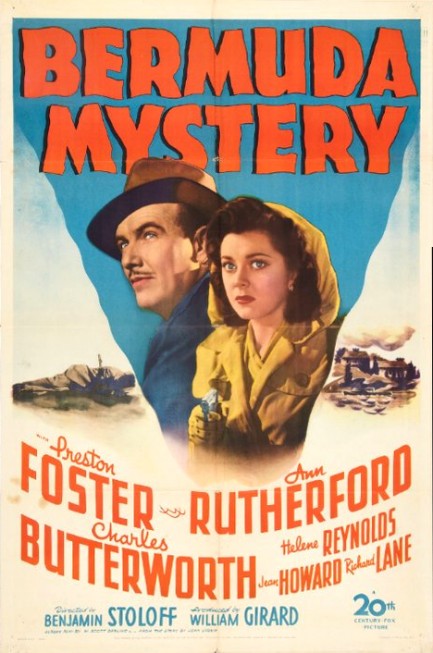
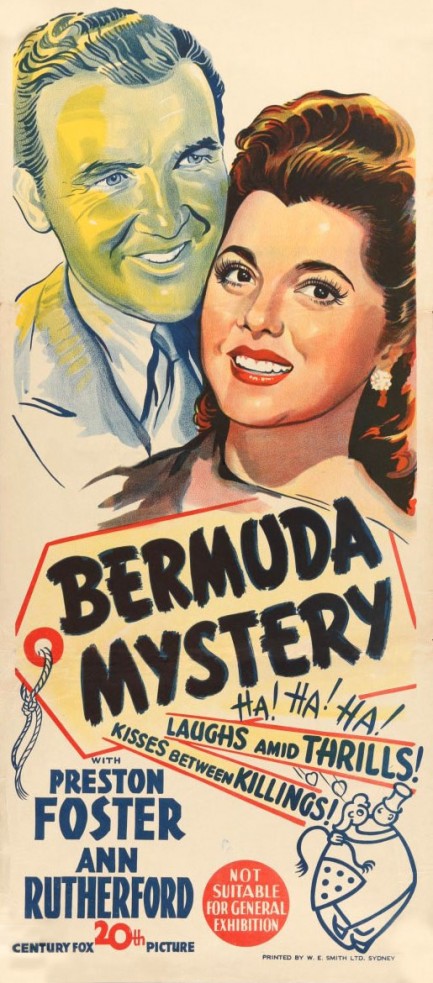
| Intl. Notebook | Jul 16 2015 |

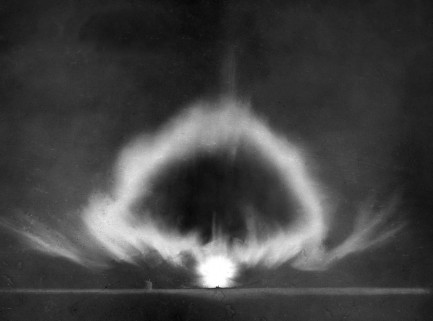
This photo shows a long exposure of the early instants of the Trinity nuclear test, which was conducted as part of the Manhattan Project at White Sands Proving Ground in New Mexico. It happened today in 1945 and was the first nuclear explosion in human history.
| Femmes Fatales | Mar 20 2014 |

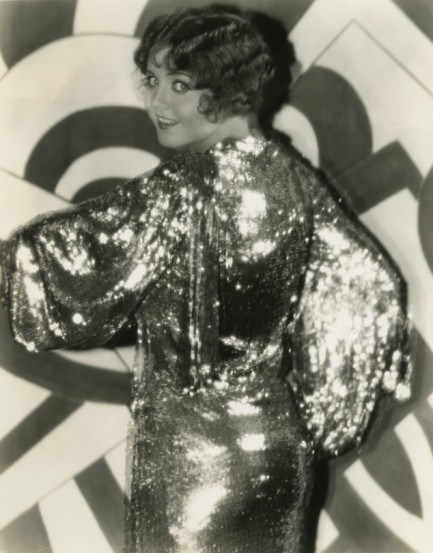
| Intl. Notebook | May 5 2013 |

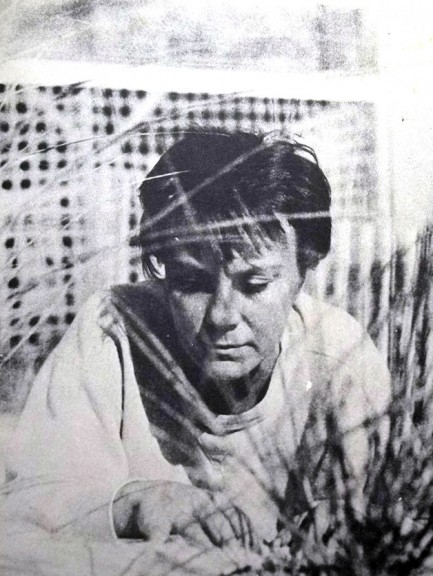
One of the most reclusive writers in the world has been forced to step into the public eye because of what she claims was a carefully orchestrated swindle. Harper Lee, author of the American classic To Kill a Mockingbird, filed suit in a Manhattan court against a man she says stole rights to her book. Lee’s lawsuit details how Samuel Pinkus, the son-in-law of her longtime agent Eugene Winick, tricked Lee into transferring the copyright on her 1960 masterpiece. In 2002 Eugene Winick was ill and, according to the suit, Pinkus began folding some of his father-in-law’s clients into his own literary agency.
In 2007 he allegedly took advantage of Lee’s failing eyesight and hearing to transfer Lee’s rights to himself, assuming irrevocable interest in the income derived from To Kill A Mockingbird, and offering no payment to the author. Lee signed the crucial papers when she was recuperating from a stroke. In 2012 she took legal action and regained the copyright,  but Pinkus still derives income from sales of the book though he is no longer Lee’s agent. The lawsuit says Lee has no memory of agreeing to anything.
but Pinkus still derives income from sales of the book though he is no longer Lee’s agent. The lawsuit says Lee has no memory of agreeing to anything.
Since this is a website, not a court, we’ll just say what other stories about this haven’t yet—Samuel Pinkus thought Harper Lee was going to die and stole her book. With Lee dead, and very little likelihood such a private individual would have discussed the matter with anyone, there would have been nobody to dispute his ownership of a revered, Pulitzer Prize-winning gold mine. When she recovered and realized what had happened, Pinkus scrambled to give the copyright back but had arranged to keep raking money off the top in perpetuity—his backup plan. Pinkus, naturally, has had no comment on the lawsuit, and presumably won’t until the Manhattan court has to decide the case.
| Intl. Notebook | Dec 6 2012 |

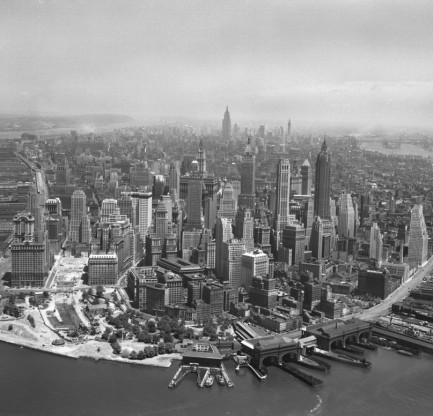
Above is a photo of Manhattan, New York City, in the year 1947, looking from Battery Park toward midtown. Here you see everything—the Staten Island Ferry Building at bottom, Wall Street to the right, the 59th Street Bridge crossing Welfare Island at upper right, and in the hazy distance, the Empire State Building—at that time arguably America’s most recognized symbol. In the aftermath of a war that had destroyed Europe’s and Japan’s industrial capacity, the U.S. was the unquestioned power on the planet, with massive economic might, a military that had taken up permanent residence in dozens of countries, and a growing stock of nuclear weapons. Two years later the Soviets would detonate their first nuclear bomb, shaking the American edifice to its foundation. Meanwhile, all around the world, the seeds of change were taking root. Below is a look at the world as it was in 1947.
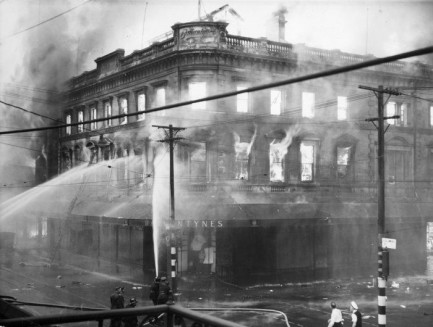
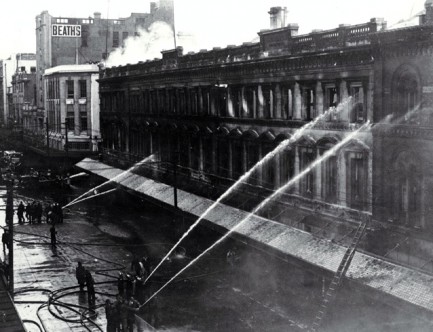
Firemen try to extinguish a blaze in Ballantyne’s Department Store in Christchurch, New Zealand.
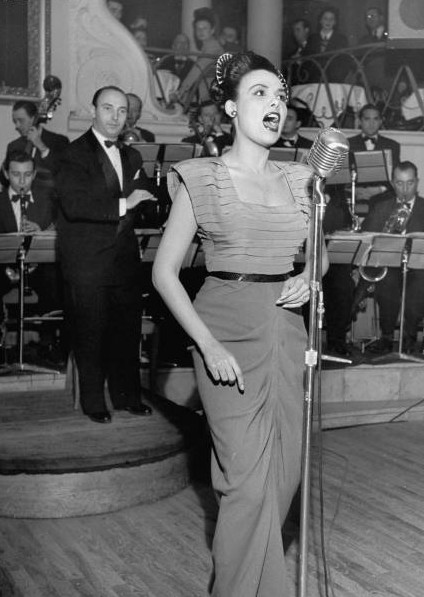
American singer Lena Horne performs in Paris.
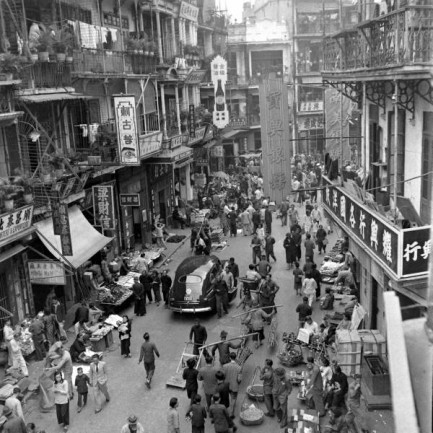
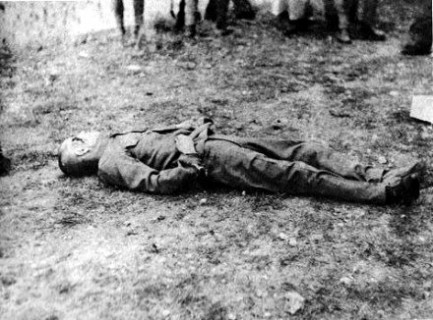
The hustle and bustle of Hong Kong, and the aftermath of the execution of Hisakazu Tanaka, who was the Japanese governor of occupied Hong Kong during World War II.
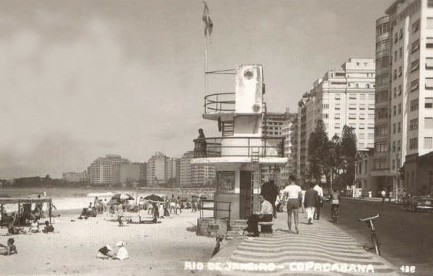

Sunbathers enjoy Copacabana Beach in Rio de Janeiro, and a military procession rumbles along Rua Catumbi.
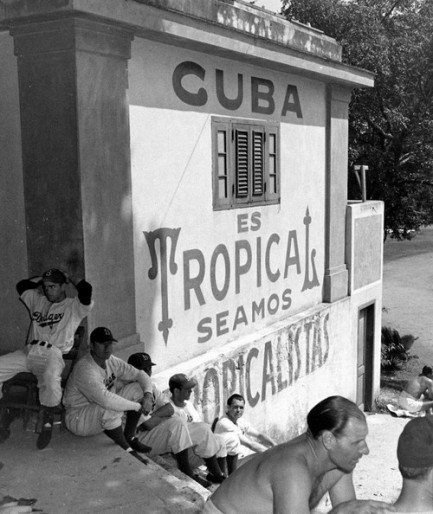
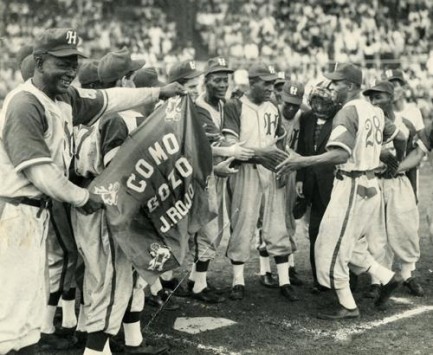
Assorted Brooklyn Dodgers and manager Leo Durocher (shirtless in the foreground) relax at Havana, Cuba’s Estadio La Tropical, where they were holding spring training that year. Second photo, Cuban players for the Habana Leones celebrate the first home run hit at Havana’s newly built Estadio Latinoamericano.
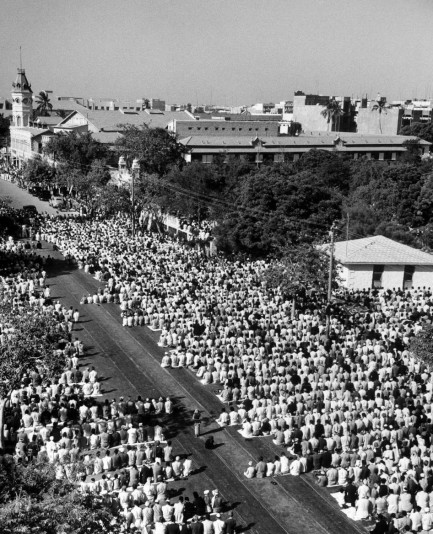
Thousands of Muslims kneel toward Mecca during prayer time in Karachi, Pakistan.
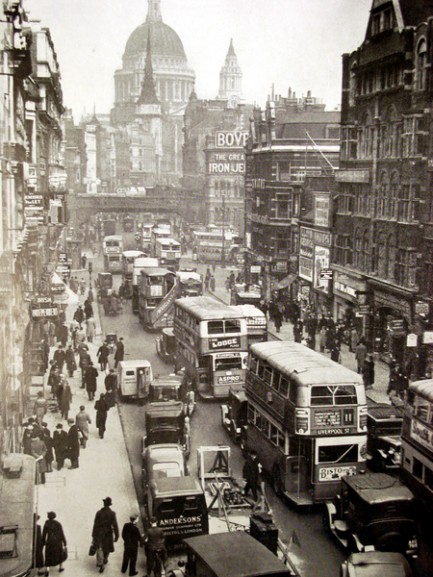
A snarl of traffic near St. Paul’s Cathedral in London.
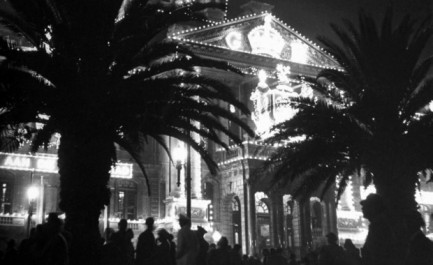
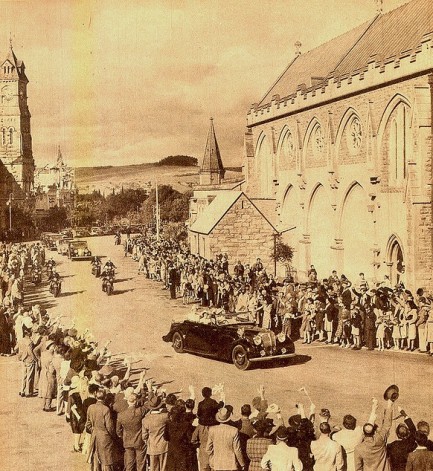
The city hall of Cape Town, South Africa is lit up to celebrate the visit of the British Royal Family. Second photo, during the same South African trip, the royals are welcomed to Grahamstown.
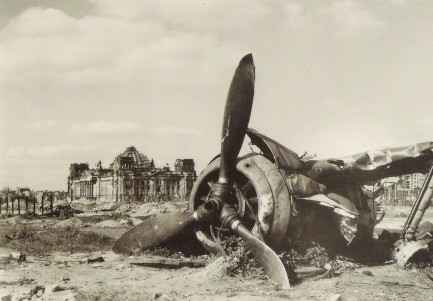
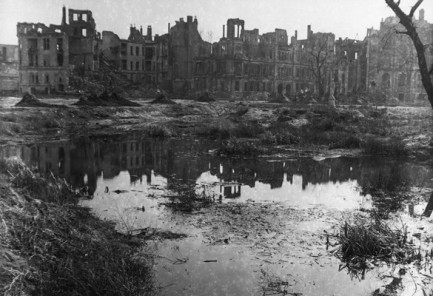
A wrecked fighter plane rusts in front of Berlin’s burned and abandoned parliament building, the Reichstag. Second photo, a shot of ruins in Berlin’s Tiergarten quarter, near Rousseau Island.
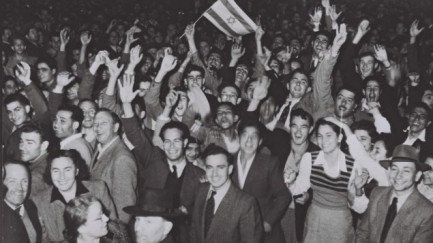
A crowd in Tel Aviv celebrates a United Nations vote in favor of partitioning Palestine.
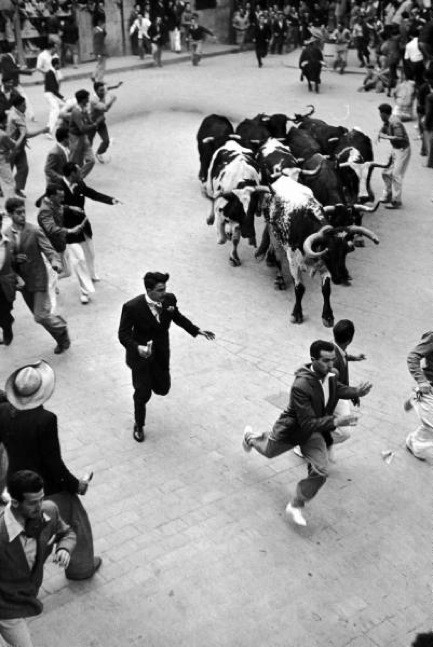
Men and bulls run through the streets of Pamplona, Spain during the yearly Festival of San Fermin.
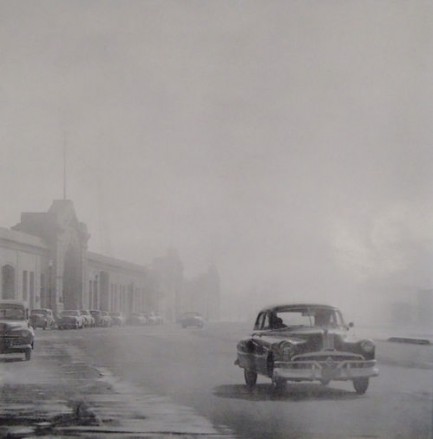
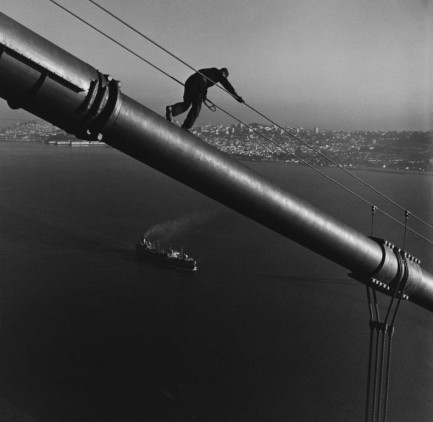
Fog rolls across the Embarcadero in San Francisco; a worker descends from a tower of the Golden Gate Bridge.
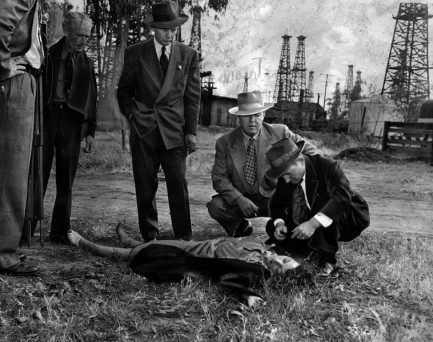
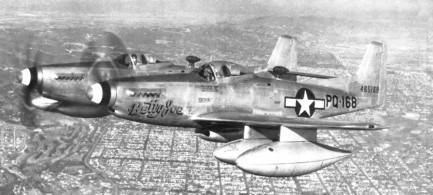
Detectives study the body of a woman found murdered in Long Beach, California. Two P-51 Mustang fighters fly above Los Angeles.
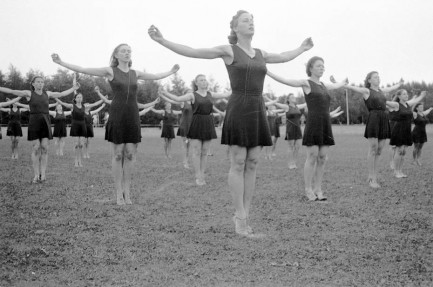
Danish women from Snoghøj Gymnastics School practice in Odense.
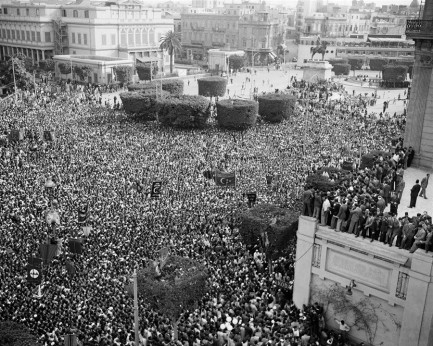
Tens of thousands of protesters in Cairo demonstrate against the United Nations vote in favor of partitioning Palestine.
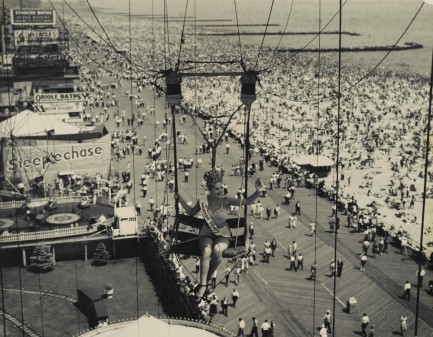
A beauty queen draped with a sash that reads “Modern 1947” is lifted high above the boardwalk in Coney Island, New York.
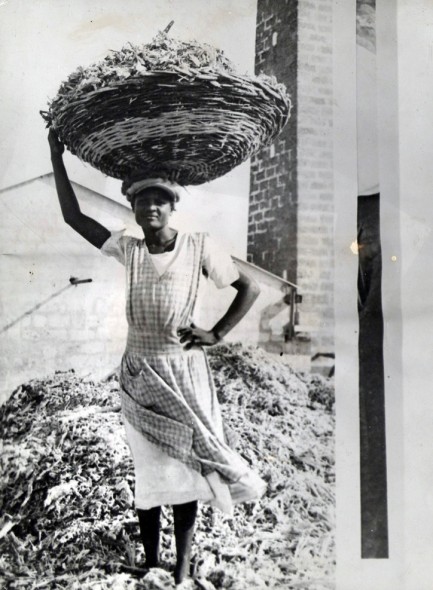
A woman in Barbados holds atop her head a basket filled with fibers meant for burning as fuel.
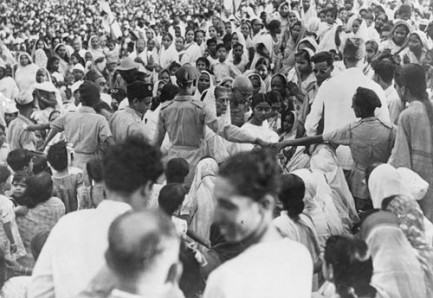
Mahatma Gandhi, his bald head barely visible at upper center, arrives through a large crowd for a prayer meeting on the Calcutta Maidan, India.
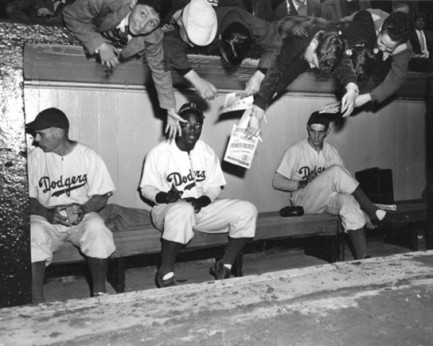
Major League Baseball player Jackie Robinson is hounded for autographs in the dugout during a Brooklyn Dodgers game.
| Sex Files | Sep 2 2011 |

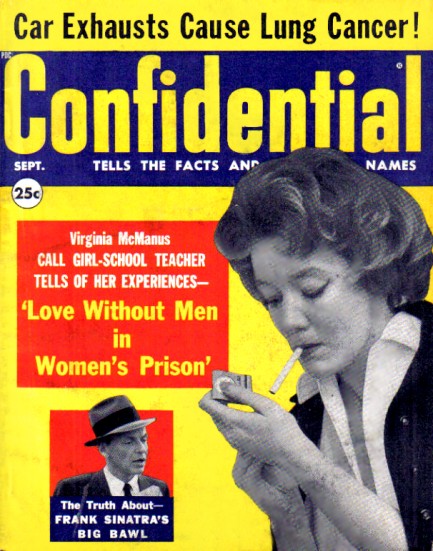
Virginia McManus, who you see above having a smoke, stars on the cover of this September 1959 Confidential because she transformed from a New York City teacher into an expensive Manhattan call girl. Her fame was typically short-lived in the tabloid universe, but it was hardly usual in its details. McManus was a child prodigy, scion of a well-to-do Chicago family. She moved to New York when she got a job as a substitute biology teacher at Brooklyn’s William Maxwell Vocational High School. But the job didn’t pay well, and she had a difficult relationship with her parents that precluded asking for money, so McManus made the decision to sell sex.
She was arrested for prostitution in October 1958, but acquitted of the charges. The arrest did nothing to deter her—quite the contrary, she gave up teaching and became a full time lady of the evening, eventually partnering with a woman named Beatrice Garfield, whose midtown 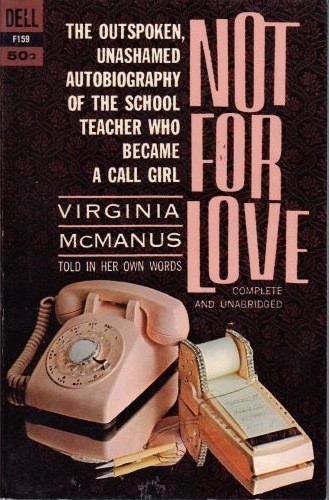
 Manhattan apartment was their base of operations. In February 1959 police raided that apartment and found a nude McManus entertaining two businessmen. This time she was convicted and served three months in New York’s Women’s House of Detention.
Manhattan apartment was their base of operations. In February 1959 police raided that apartment and found a nude McManus entertaining two businessmen. This time she was convicted and served three months in New York’s Women’s House of Detention.
In Confidential, she reveals that half the women in her jail were lesbians, and that confinement actually made their lives easier, at least in terms of hooking up without public scorn and legal risk. She was making an important point, but of course it read like something right out of a sleaze pulp novel, and the public ate it up. McManus, understanding the financial opportunity being presented, wasn’t long in writing a book. That book, entitled Not for Love, was published the next year and explained how a child prodigy who could read the Bible at age three and earned a Master’s Degree in literature became a hooker.
There were several fascinating passages: she admitted that prostitution had been an easy transition for her because she had always been promiscuous, writing, “I had been able to go to bed with five men, all complete strangers, without guilt or horror or even as much revulsion as I had anticipated.” She described some of the other call girls, and how their emotional fragility led to depression and drug abuse, and revealed that, “Inwardly, I hadn’t changed a bit. These “girls” have not matured into adult women, despite the nature of their activities.”
The book was an instant bestseller, and for a time the erudite McManus was everywhere. The woman who spoke so frankly about her experiences in the sex trade, and who had written that, "My father was a shadowy figure in my life, scarcely distinguishable from any other big man with a hat and cigar," was a case study for everyone from Freudians to feminists. But this was New York City, after all, where there were so many scandals and so little time. Eventually, she was pushed from the front pages, the bestseller list, and finally from memory. Today, save for a few copies of her book that appear on auction sites, little trace of her exists in the historical record.
| The Naked City | Nov 23 2010 |

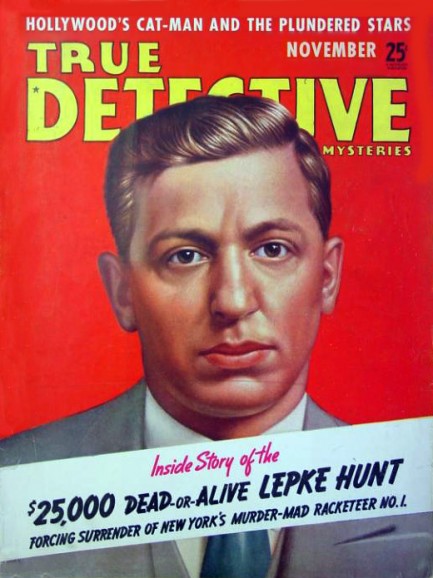
This True Detective from November 1939 features a cover painting of mobster Louis “Lepke” Buchalter, whose flight from authorities had taken him from the U.S. to Mexico, and then to Costa Rica, Puerto Rico and Cuba, and across the ocean to England, France and Germany. Buchalter had begun his career in organized crime by shaking down pushcart operators in Brooklyn, and had risen through the ranks of the criminal-controlled fur industry by doing every type of dirt imaginable, from issuing threatening phone calls to garment union activists to throwing acid in a competitor’s face. Eventually he was running a criminal empire that stretched to both coasts, and was acting as head of the infamous assassination squad Murder, Inc.
In 1936 Buchalter went into hiding after he became aware that criminal charges were being prepared against him. Not long after he dropped out of sight, he was indicted for smuggling an estimated $10 million in heroin into the U.S. from Hong Kong. The FBI printed a million posters and displayed them in every post office, police station, and federal building in America. All this attention was a problem for U.S. mob bosses, and so with characteristic unsentimentality, they decided Buchalter had to surrender. Convincing him was not difficult. While he undoubtedly had the flair and intelligence to dodge the feds indefinitely, living in another country away from the old neighborhood and away from the hundreds of underlings who respected him was not his style. Buchalter was a mobster through-and-through. To him, an anonymous existence, even in a tropical paradise or cosmopolitan foreign capitol, was little different from being in prison.
Buchalter’s associates got word to him that if he came back to the U.S. he would be able to surrender personally to J. Edgar Hoover. Surrendering to the Feds meant he would not face a more serious group of charges brought by Manhattan D.A. Thomas Dewey. But it was wishful thinking. The federal charges were rapidly followed by Dewey’s charges and Buchalter earned a fourteen-year jolt in the pen. His legal team hoped to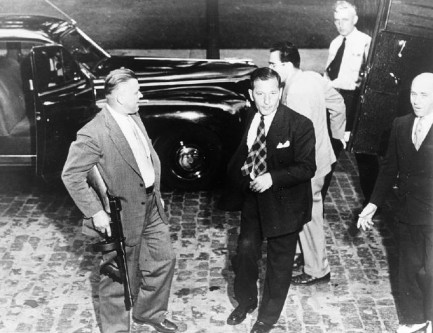 have the sentence reduced via appeals and procedural maneuvers, but when a snitch fingered Buchalter for ordering the murder of a candy store owner named Joe Rosen, he was tried for the killing, convicted, and sentenced to execution. By some estimates Buchalter had been responsible for a thousand murders as head of Murder, Inc., but all it took was one to seal his fate. Louis "Lepke" Buchalter was electrocuted in Sing Sing prison's famous "Old Sparky" electric chair on March 4, 1944, perhaps while realizing life on a beach in Costa Rica hadn’t been so bad after all.
have the sentence reduced via appeals and procedural maneuvers, but when a snitch fingered Buchalter for ordering the murder of a candy store owner named Joe Rosen, he was tried for the killing, convicted, and sentenced to execution. By some estimates Buchalter had been responsible for a thousand murders as head of Murder, Inc., but all it took was one to seal his fate. Louis "Lepke" Buchalter was electrocuted in Sing Sing prison's famous "Old Sparky" electric chair on March 4, 1944, perhaps while realizing life on a beach in Costa Rica hadn’t been so bad after all.
| Vintage Pulp | Dec 3 2009 |


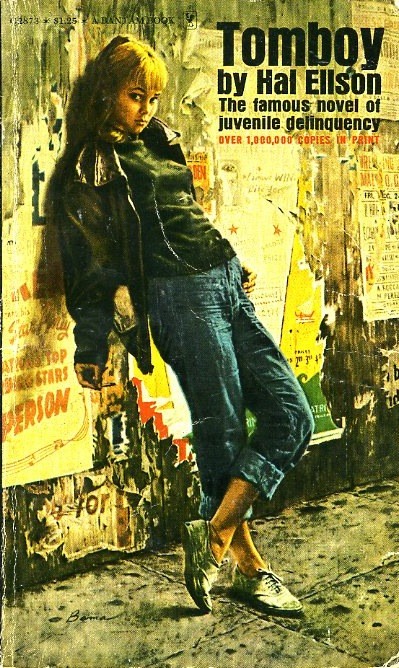
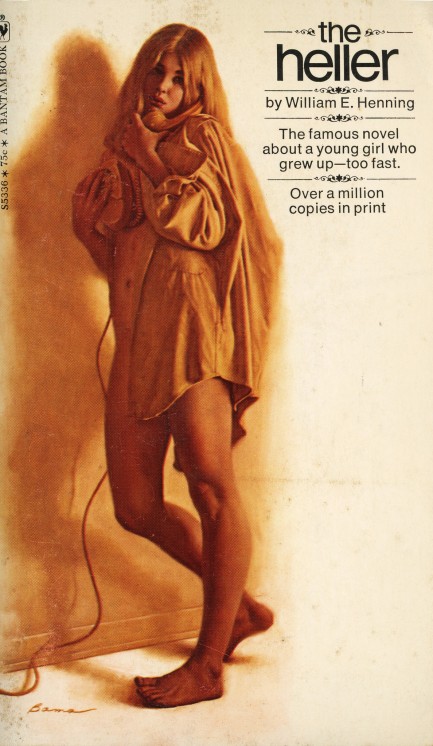
Above are three covers by realist illustrator James Bama, featuring figures leaning against walls. Bama also loves the crossed leg pose you see on two of these pieces and used it on his famous cover for Midnight Cowboy. Bama was born and raised in Manhattan, and you can see his keen eye for urban detail in these pieces, but interestingly, he moved to Wyoming and became a leading painter of western-themed art. In fact, he was inducted into the Illustrator’s Hall of Fame because of his western art. But we prefer the citified Bama. The realism and immediacy of his early paintings is unmatchable. These are three of the best examples.




































































